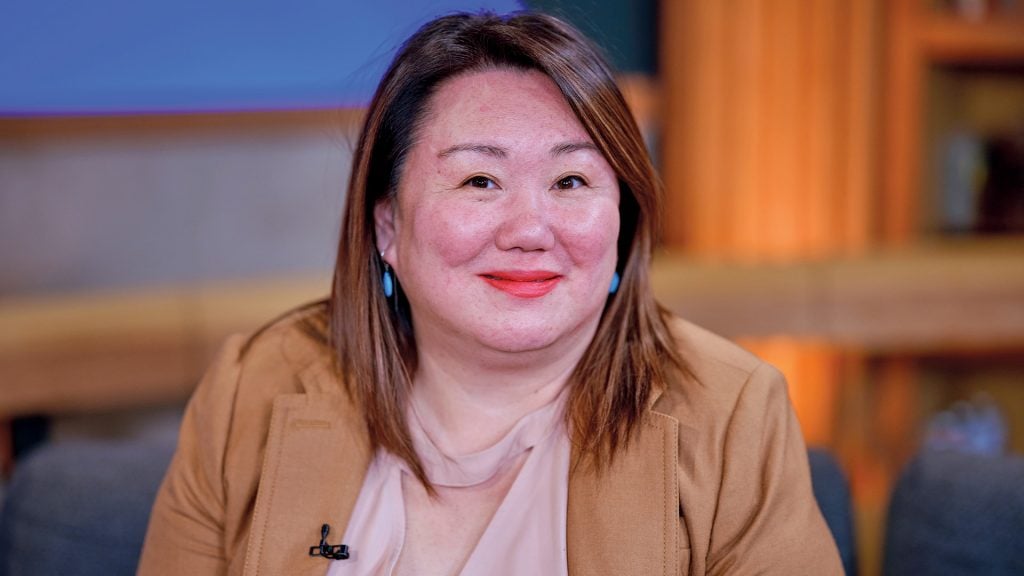
By Kaomi Lee
When I was hired in 2017, it was a bit of a gamble for both Twin Cities PBS and me. I had returned to the U.S. after a year-long stint in Seoul, Korea as a Fulbright senior scholar on a journalism research grant. I had the journalism chops, having won peer-reviewed awards for my radio work in several states. But Almanac needed someone with on-camera experience to report on issues important to Greater Minnesota, with new funding from the Bremer Foundation and others to do the work.
The question of whether I would work out or not was front-of-mind for both my future boss, longtime Almanac executive producer Brendan Henehan, and myself. Would I be able to make the medium switch from audio to visual? Six and a half years later, I’m still here. In retrospect, Brendan and I had little to fear.
There are two distinct reasons. For one thing, I had a solid grasp of the nuts and bolts of news reporting. I knew how to spot a story, find good characters, listen for the money quote. Journalism school had drilled into me the mantra of answering the who/what/when/where – and perhaps most importantly in public media – the why. I had a reporter’s insatiable curiosity. That’s not to say there wasn’t a learning curve. There was. I won’t do a deep-dive here, but suffice to say that writing for the eye and for the ear are not the same thing.
The second reason, however, was not as obvious. It had been years since I had grown up in small communities as a pastor’s kid in Greater Minnesota (Gibbon and Taylors Falls). I thought it would be like the proverbial ‘coming home.’ It was and it wasn’t. I am an adult now and a Twin Citian. Reporters know that trust is earned and not given lightly. But I soon learned that my background of growing up in small, rural communities made me relatable to the people I was interviewing. They knew where my hometown was, and that polka had once been king. They understood the life I came from, and possibly I could understand theirs. That has been helpful so many times to open doors.
I’ve also learned that as cliché as it is, times have changed. Residents in Greater Minnesota are not necessarily tied to the farm economy. New Minnesotans have moved in – like southeast Asians, Latinos and east Africans. New flavors, faces and energy are adding to the vibrancy and survival of many of these communities. My story on how the diversity of the students at Austin Public Schools and the impact that will have on that community for years to come, was a good reminder that Greater Minnesota has been, and is, changing. Difference was no longer along religious affiliation, or if your family name had an ‘son’ or ‘sen’ like the small towns of my youth.
There is a lot of pride of living in open spaces. Commutes are short, civic and school participation can be high and where you might get a friendly wave from a stranger. People in Greater Minnesota are not ‘deprived’ or ‘less fortunate’ than their metro counterparts. In fact, most residents are there by choice, like the Ivy-educated Ingrahams, who left their suburban East Coast lives behind and moved their family to Red Lake Falls. They want what a slower-paced rural life can give them and their kids. Their story was another good reminder that people in Greater Minnesota are not a monolith and an uncultured cliché. In New London, I profiled an artist, Bethany Lacktorin, who is helping to revitalize her community with visionary programming at her local theater. In Hovland, we met Linda Newman, who lives off-grid with her sled dogs. She specializes in women-only outdoor adventures, but has felt the economic effects of last winter’s warmer temperatures. In their own way, these Greater Minnesotans are living their lives to the fullest in the way they’ve chosen. I am lucky to have the opportunity to share their stories.
In a way, that is how I see my job. That interesting people are doing interesting things, all over our state. There are also challenges. Climate change, global competition, consolidating healthcare delivery, Internet-based economies and shifting political winds – all force us to consider our values. Almanac is in its 40th year and is the longest running prime time television program in our state history. Every week, we try to earn the trust of our viewers by having important dialogue on politics and public affairs. I am proud of the work our small team collectively does and of my role in bringing the voices of Greater Minnesotans to a statewide audience.
And in these divisive times, the work has never felt more vital.
Tune in to Almanac, Fridays at 7 p.m. on TPT 2, or stream on TPT.org/almanac.
We invite you to join Almanac at The Minnesota State Fair for a live taping on Friday, August 23, 11 a.m-12 p.m., where you can meet Kaomi and the hosts afterwards.
© Twin Cities Public Television - 2024. All rights reserved.
Read Next



